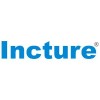
i
Successive
Technologies
Filter interviews by
Successive Technologies Interview Questions and Answers
33 Interview questions
Promises in JavaScript are objects representing the eventual completion or failure of an asynchronous operation.
Promises are used to handle asynchronous operations in JavaScript.
A Promise can be in one of three states: pending, fulfilled, or rejected.
Promises can be chained using .then() method to handle success and failure cases.
Promises can be created using the Promise constructor.
Example: const myPromise = new ...
Agile is iterative and flexible, while waterfall is sequential and rigid.
Agile involves continuous feedback and adaptation, while waterfall follows a linear approach.
Agile allows for changes throughout the project, while waterfall requires detailed planning upfront.
Agile is best suited for projects with evolving requirements, while waterfall is better for projects with well-defined requirements.
Agile promotes coll...
Managing conflict between QA and developers requires effective communication, collaboration, and conflict resolution skills.
Encourage open communication and collaboration between QA and developers to address issues early on
Establish clear roles and responsibilities for both QA and developers to avoid misunderstandings
Implement a structured process for resolving conflicts, such as holding regular team meetings or u...
Risk management is the process of identifying, assessing, and prioritizing risks followed by coordinated and economical application of resources to minimize, monitor, and control the probability and impact of unfortunate events.
Identifying potential risks that could impact a project or organization
Assessing the likelihood and impact of each risk
Prioritizing risks based on their potential impact and likelihood
Devel...
Call and apply are both methods used to invoke a function with a specific 'this' value.
Call takes arguments as a comma-separated list, while apply takes arguments as an array.
Call is used when the number of arguments is known, while apply is used when the number of arguments is unknown.
Call is generally faster than apply.
Both methods are used to set the 'this' value of a function.
The map to use for auto complete is the Trie data structure.
Trie is a tree-like data structure that efficiently stores and retrieves strings.
It is commonly used for auto complete functionality as it allows for fast prefix matching.
Each node in the Trie represents a character, and the edges represent the next possible characters.
By traversing the Trie, all possible completions for a given prefix can be found.
Exampl...
Using apply() to pass parameters as an array in JavaScript functions.
The apply() method calls a function with a given this value and arguments provided as an array.
Syntax: function.apply(thisArg, [argsArray])
Example: function greet(name) { console.log('Hello ' + name); } greet.apply(null, ['Alice']);
Useful for functions that accept multiple arguments when you have them in an array.
Can be used with built-in functio...
I have 3 years of experience in marketing.
I have worked in various marketing roles for the past 3 years.
During my time in marketing, I have successfully executed multiple campaigns and strategies.
I have experience in both traditional and digital marketing channels.
I have worked with cross-functional teams to achieve marketing objectives.
I have a strong understanding of market research and analysis.
Async/await is a way to write asynchronous code in a synchronous style.
Async/await is a syntax for writing asynchronous code in JavaScript.
It allows you to write asynchronous code that looks like synchronous code.
It uses the 'async' keyword to define an asynchronous function and the 'await' keyword to wait for a promise to resolve.
It helps to avoid callback hell and makes code more readable and maintainable.
Callback hell is a situation where nested callbacks make code difficult to read and maintain.
Use named functions instead of anonymous functions
Use Promises or async/await to handle asynchronous operations
Use modularization and separation of concerns to break down complex code
Use error handling to prevent code from breaking
Successive Technologies Interview Experiences
25 interviews found
I appeared for an interview in Jan 2025.
(2 Questions)
- Q1. Basic Java Questions
- Q2. One Steam coding question
(1 Question)
- Q1. Normal discussion around project and architecture
Interview Preparation Tips
I applied via Company Website
Make a node js api with express server
I applied via Campus Placement and was interviewed in Nov 2023. There were 4 interview rounds.
2hrs exam basic questions of aptitude, English
Digitalization, social media impact in Indian societies, Deep fake AI
(6 Questions)
- Q1. Agile practices
- Q2. Difference between agile and waterfall
- Ans.
Agile is iterative and flexible, while waterfall is sequential and rigid.
Agile involves continuous feedback and adaptation, while waterfall follows a linear approach.
Agile allows for changes throughout the project, while waterfall requires detailed planning upfront.
Agile is best suited for projects with evolving requirements, while waterfall is better for projects with well-defined requirements.
Agile promotes collabora...
- Q3. About SDLC and it's process
- Q4. Roles and responsibilities of people in SDLC
- Q5. How to manage the conflict between QA and developer in a team
- Ans.
Managing conflict between QA and developers requires effective communication, collaboration, and conflict resolution skills.
Encourage open communication and collaboration between QA and developers to address issues early on
Establish clear roles and responsibilities for both QA and developers to avoid misunderstandings
Implement a structured process for resolving conflicts, such as holding regular team meetings or using ...
- Q6. What is Scrum? Why is it important
- Ans.
Scrum is an agile project management framework that emphasizes teamwork, accountability, and iterative progress.
Scrum involves breaking down projects into small, manageable tasks called user stories.
It includes daily stand-up meetings to track progress and address any obstacles.
Scrum promotes collaboration, adaptability, and continuous improvement.
It helps teams deliver high-quality products quickly and efficiently.
Exa...
(4 Questions)
- Q1. Why this job being from engineering background
- Q2. Are you available for urgent ad-hoc activities
- Ans.
Yes, I am available for urgent ad-hoc activities and can prioritize tasks effectively to meet business needs.
I can quickly adapt to changing priorities, ensuring urgent tasks are addressed promptly.
For example, if a team member is unavailable, I can step in to complete their analysis.
I have experience managing multiple tasks simultaneously, which helps in handling urgent requests efficiently.
I am proactive in communica...
- Q3. Family background
- Q4. Why not core job, why BA
Interview Preparation Tips
- Scrum
- Agile Methodology
- Waterfall
- role of business anlayst
Skills evaluated in this interview
(1 Question)
- Q1. Introduction part
Share set of task to complete within the time period
Interview Preparation Tips
I applied via Referral and was interviewed in Apr 2024. There were 2 interview rounds.
It was excellent and ask moderate types of questions.
(1 Question)
- Q1. As a freshers mostly ask questions Opps concepts, solid principal. And also well know about data structure.
Interview Preparation Tips
Basics of JS, Node JS. Deep dive in React JS concept
(1 Question)
- Q1. About project. Technologies used. More deep dive in the concepts
(1 Question)
- Q1. Just HR round for salary negogiation
I applied via Company Website and was interviewed in Jan 2024. There was 1 interview round.
The coding round is of 1 hr in which they ask questions related to skills and project mention in my resume
(1 Question)
- Q1. Oops concept , static class , function , trigger , constructor , dB context
Interview Preparation Tips
I applied via Campus Placement and was interviewed in Aug 2023. There were 4 interview rounds.

The first round is coding round which consists of 7round each round is a elimination round but questions are basic like pattern printing,reverse string or find odd and even number
The next round consist of 4 medium level coding questions questions are from dsa or database scheduling.
(1 Question)
- Q1. I was eleminate before.
I applied via Approached by Company and was interviewed in Jul 2023. There were 3 interview rounds.

(1 Question)
- Q1. Formal job description
(1 Question)
- Q1. Technical knowledge expect
- Ans.
Desktop Support Engineers troubleshoot and resolve hardware and software issues for users, ensuring smooth IT operations.
Familiarity with operating systems like Windows, macOS, and Linux. For example, resolving boot issues in Windows 10.
Knowledge of common software applications, such as Microsoft Office and troubleshooting installation problems.
Experience with hardware components, including replacing RAM or hard drives...
Top trending discussions






Successive Technologies Interview FAQs
The duration of Successive Technologies interview process can vary, but typically it takes about less than 2 weeks to complete.
Tell us how to improve this page.
Successive Technologies Interviews By Designations
- Successive Technologies Associate Engineer Interview Questions
- Successive Technologies Senior Associate Interview Questions
- Successive Technologies Technical Lead Interview Questions
- Successive Technologies Lead Engineer Interview Questions
- Successive Technologies Software Developer Interview Questions
- Successive Technologies Business Analyst Interview Questions
- Successive Technologies Lead Business Analyst Interview Questions
- Successive Technologies Engineer Trainee Interview Questions
- Show more
Interview Questions for Popular Designations
Overall Interview Experience Rating
based on 24 interview experiences
Difficulty level
Duration
Interview Questions from Similar Companies
Successive Technologies Reviews and Ratings
based on 201 reviews
Rating in categories
|
Associate Engineer
185
salaries
| ₹2.8 L/yr - ₹9.4 L/yr |
|
Senior Associate Engineer
158
salaries
| ₹9 L/yr - ₹16.2 L/yr |
|
Associate Software Engineer
117
salaries
| ₹3.5 L/yr - ₹8.4 L/yr |
|
Desktop Support Engineer
81
salaries
| ₹1.4 L/yr - ₹1.8 L/yr |
|
Technical Lead
53
salaries
| ₹18.6 L/yr - ₹28.2 L/yr |

Tekwissen

Softenger

XcelServ Solutions

Capital Numbers Infotech
- Home >
- Interviews >
- Successive Technologies Interview Questions















